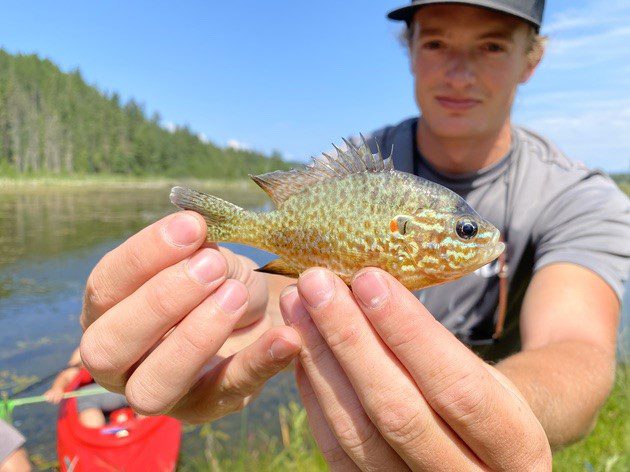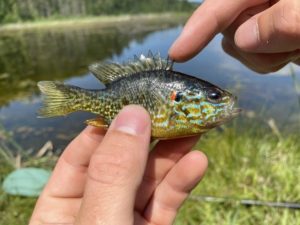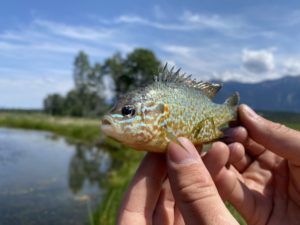
Invasive species are second only to habitat loss as the cause for native species decline. Introduced fish in particular can have detrimental effects on aquatic ecosystems. They can affect native fish, amphibians, invertebrates, and vegetation through habitat alteration, predation, competition, disease, and gene pool deterioration.
The Pumpkinseed Sunfish is an invasive species that is causing a significant amount of damage to ecosystems in BC. They have driven native species to extinction including many unique species of stickleback because of their broad physiological tolerances and their capacity to dominate their native counterparts.
Pumpkinseed are native to eastern North America but their invasion in BC began in the early 1900s, when they were introduced through the Columbia River system. Since then, they have entered the Kootenay River system in BC. Non-native pumpkinseed is also found in several lakes on Vancouver Island as well as the lower Fraser Valley. They can now be found everywhere between the Pacific and Atlantic in small lakes and ponds, and in shallow, weedy bays of larger lakes.

Pumpkinseed Sunfish were introduced for different purposes including control of other fish populations and as forage for predatory species such as largemouth bass. Invasive fish species such as the Pumpkinseed are also often introduced to novel environments through unauthorized releases or escapes. In both of these instances their release has had unintended and dire consequences for native species.
Our Kootenay Field Crew is working to stop the spread and destruction of the Pumpkinseed Sunfish. At a Cherry Creek pond on our Bummers Flats property, the crew has been using minnow traps with larger holes – that they modified themselves – to bait and then remove the pumpkinseed sunfish. This species is a major problem at this site because they are known to eat native insects, food supplies and amphibian eggs, having detrimental impacts on a number of species and the ecosystem as a whole.

Although they are unsure how this species originally invaded, they assume it was likely through other connecting waterways. The crew is not yet confident that their trapping and removal method of species control will be an effective long-term strategy for eliminating the pumpkinseeds from the pond, but they are hopeful that it will at least have some kind of positive impact on the overall health of the pond.
